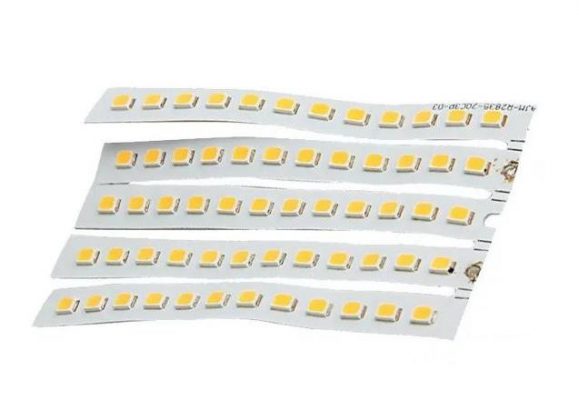At present, the PCB circuit board products on the market are mainly divided into three types in terms of materials: Ordinary substrates, metal substrates and ceramic substrates. Now, let’s see the common metal substrate classification and its advantages together.

1. Classification of Common Metal Substrates
There are three main types of metal substrates: Aluminum substrates, copper substrates, and iron substrates. The focus here is on aluminum substrates and copper substrates.
Aluminum substrate is currently the most used substrate among metal substrates, and has good thermal conductivity, electrical insulation properties and mechanical processing properties. Aluminum substrates are divided into flexible aluminum substrates, hybrid aluminum aluminum substrates, multi-layer aluminum substrates, through-hole aluminum substrates, etc.
The copper substrate is the most expensive type of metal substrate, and its thermal conductivity is many times better than that of the aluminum substrate and the iron substrate. Copper substrates are divided into immersion gold copper substrates, silver-plated copper substrates, tin-sprayed copper substrates, and anti-oxidation copper substrates.

2.The Advantages of Metal Substrates
1. Thermal expansion
The metal substrate can effectively solve the problem of heat dissipation, so that the problem of thermal expansion and contraction of different materials on the circuit board can be alleviated as well as the durability and reliability of electronic equipment can be improved.
2. Heat dissipation
Nowadays, many double-sided and multi-layer boards have high density and high power, and it is difficult to dissipate heat; And metal-based printed boards are able to solve this heat dissipation problem.
3. Dimensional stability
Metal substrate dimensions are much more stable than sheets of insulating material.
4. Wide range of applications
The application fields of aluminum substrates are extremely wide, such as input and output amplifiers of audio equipment, balanced amplifiers; Computer CPU board floppy disk drives, power supply units; Automotive electronic regulators, igniters, power controllers; Lamps and lanterns LED lights, etc.
Copper substrates are mainly suitable for high-frequency circuits, including heat dissipation of precision communication equipment in areas with large changes in high and low temperatures.

Grande Metal Substrate Process Capability
Layers: 1-2L (metal substrate & metal core board), 1-2L (ceramic DBC board);
Thickness: 0.5-3.0mm Size: max: 400*500, min: 25*25mm;
Machining: X/Y/Z accuracy ±0.08mm, horn hole, screw hole;
Thermal Conductivity of Thermal Conductive Material: Conventional thermal conductive material: 1-4W/m.k; Ceramic thermal conductive material: 24-170W/m.k;
Maximum routing copper thickness: 5OZ;
Metal Surface Finish: Aluminum ordinary oxidation, aluminum hard oxidation, aluminum chemical passivation, sandblasting, wire drawing, surface electroplating treatment;
Surface Finish Technology: Hot air leveling, chemical immersion gold, immersion tin, immersion silver, electroplating soft/hard gold, etc.

PCBA Service Process
1. Project Consultation/Quotation: The customer provides a complete PCBA data to quote;
2. Customer Places Order: The customer confirms the quotation, signs the contract, and pays the advance payment;
3. Engineering Evaluation: Engineer evaluates customer-supplied data and converts it into final production data;
4. Purchasing Raw Materials: Purchasing arrange PCB board and component procurement based on production materials;
5. PCBA Manufacturing: SMT and DIP soldering are performed after all boards and materials are assembled;
6. PCBA Test: Test the assembled board according to customer provided test method;
7. Packaging & After-Sales: The customer pays the balance, and the PCBA is packaged and shipped.
